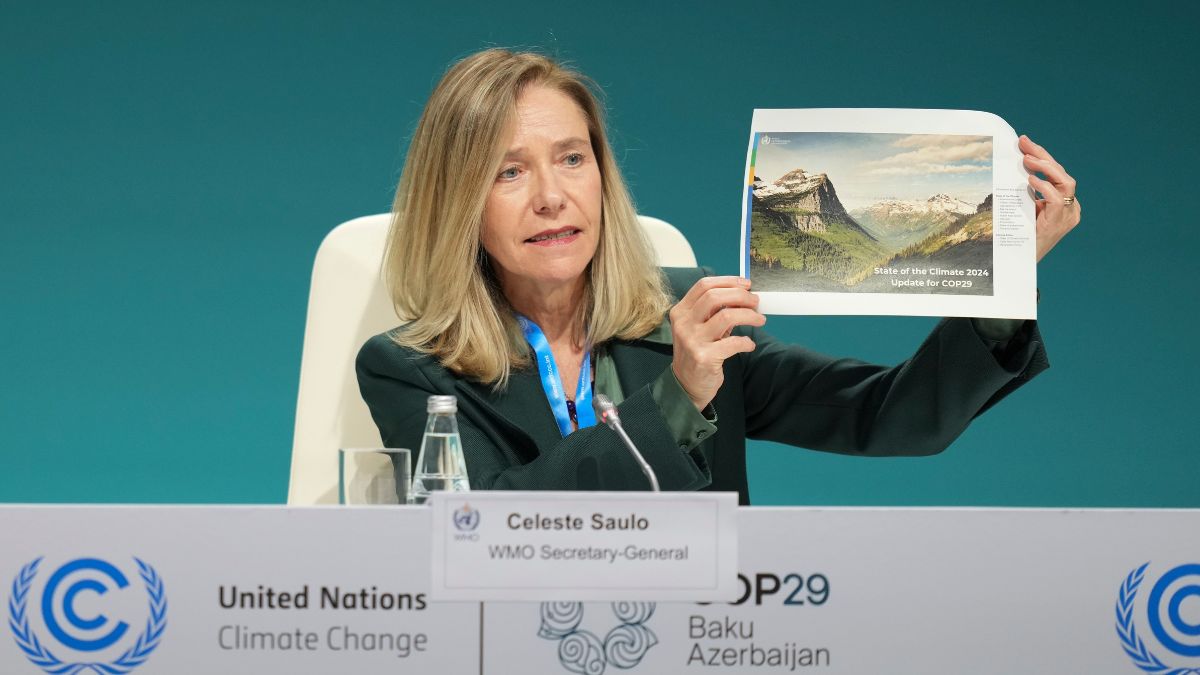Hyderabad: The World Meteorological Organisation (WMO) has issued a Red Alert at the sheer pace of climate change in a single generation, claiming this year to be on track to be the warmest year on record as the warming temporarily hits 1.54 degrees Celsius.
According to the report -- issued on the first day of the UN Climate Change Conference, COP29, in Baku, Azerbaijan -- the global mean surface air temperature between January and September 2024 was 1.54 degrees Celsius (with a margin of uncertainty of 0.13 degrees), boosted by a warming El Nino event.
WMO Secretary-General Celeste Saulo clarified that temporary exceedances of 1.5°C in monthly and annual warming do not mean the Paris Agreement goal has failed, as it focuses on long-term averages over decades. She noted that temperature anomalies can vary greatly due to natural phenomena like El Niño and La Niña. Saulo emphasized that every fraction of a degree of warming is significant, as each increment increases climate extremes, impacts, and risks.

Celeste Saulo mentioned the record-breaking rainfall and flooding, rapidly intensifying tropical cyclones, deadly heat, relentless drought, and raging wildfires and emphasised the urgent need to reduce greenhouse gas emissions and improve monitoring and understanding of our changing climate. Saulo also stressed the importance of increasing support for climate change adaptation through climate information services and Early Warnings for All.
Let's take a look at the report highlights:
Global temperatures
- 2024 is on track to surpass 2023 as the warmest year as global mean temperatures likely exceeded previous records for 16 consecutive months (June 2023 to September 2024)
- Exceeding 1.5°C in individual years doesn't mean the Paris Agreement goal is out of reach; it refers to long-term averages over decades
- Long-term global warming is currently around 1.3°C above the 1850-1900 baseline
Greenhouse gases
- Greenhouse gases reached record levels in 2023 and continued to rise in 2024 as CO2 concentration increased from 278 ppm in 1750 to 420 ppm in 2023, a 51 per cent increase
Ocean
- Ocean heat content in 2023 was the highest on record, with similar levels in 2024
- Ocean warming has significantly increased over the past two decades
- The ocean absorbed an average of 3.1 million terawatt-hours (TWh) of heat each year from 2005 to 2023
- 90 per cent of the energy accumulated in the Earth system is stored in the ocean, making ocean warming irreversible on centennial to millennial timescales
Sea level rise
- Sea level rise is accelerating due to thermal expansion and melting glaciers and ice sheets
- From 2014-2023, global mean sea level rose at 4.77 mm per year, more than double the rate from 1993-2002
- The El Niño effect caused rapid growth in 2023, with levels falling back in 2024
Glacier loss
- Glacier loss is worsening, with a record 1.2-meter water equivalent of ice lost in 2023
- Swiss glaciers lost about 10 per cent of their volume in 2021/2022 and 2022/2023
Sea ice extent
- Antarctic sea-ice extent was the second lowest in the satellite record (1979-2024) after 2023
- Arctic sea-ice minimum extent was the seventh lowest in the satellite record
Weather and climate
- Weather and climate extremes undermined sustainable development, worsened food insecurity, and exacerbated displacement and migration
- Dangerous heat, heavy precipitation, floods, tropical cyclones, and persistent drought caused massive loss of life and damage
Climate services
- Climate services and early warnings have made progress in the past five years with 108 countries having a Multi-Hazard Early Warning System
- Advances in Early Warnings for All (EW4All) to protect everyone from hazardous weather, water, or climate events by 2027
- Understanding climate variability and change is crucial for optimising renewable energy, ensuring energy system resilience, and analyzing energy demand patterns



